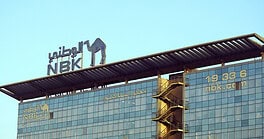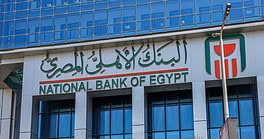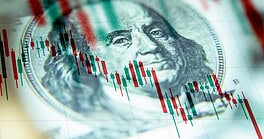UKRAINE
Amid the growing political turmoil in Ukraine, the countrys economy is proving remarkably resilient.

But any hopes that the Orange Revolution had created political stability were soon dashed as the power struggle between Yushchenko and Yanukovych continued. Since the appointment of President Yushchenkos archrival as prime minister last August, Yushchenko has foundered, seeming more like a lame duck than a president. With the Party of Regions (PoR), led by Yanukovych, having the largest share of seats in parliament and controlling the cabinet, Yushchenko is struggling to exert any political control.
Political scrapping between Yushchenkos Our Ukraine Party and the PoR culminated in the events of March 31 of this year, with Yushchenko threatening to dissolve parliament in response to allegations that Yanukovychs government coalition had increased its majority in parliament by paying opposition MPs to transfer their loyalties. On April 2 Yushchenko followed through with his threat, issuing a decree to dissolve the Rada, Ukraines parliament, and calling for elections to be held on May 27. So far, however, the Ukrainian parliament has ignored the decree, which it claims is illegal.
Yushchenkos hard-line stance came as a surprise to many. On the Friday before Yushchenko formally issued the decree, for example, Gerhard Lechner, a Ukraine analyst at bank group RZB, said he thought it unlikely the president would dissolve parliament, as the latest polls showed that he might not be in a strong position if fresh elections were held.
Yushchenkos decision has deepened the countrys political stalemate, and it is painfully unclear how long the current standoff is likely to last. According to Ukraine-based Alfa Capital, a decision by the Constitutional Court concerning the presidents decree must be handed down within five days. But, the bank says, this is unlikely given that the court has not approved a single decision since its inception eight months ago. The court itself is split, as is the country, explains Volodymyr Dinul, head of research, strategy and banking at Alfa Bank Ukraine.
Dinul says it is also unlikely that fresh elections will be organized by May, as regional election commissions need to be established. Even if they do take place, those elections may not provide the stability Yushchenko craves. Even if elections are held, the result cannot be guaranteed, as one party may not accept the results, Dinul continues. Furthermore, as the electorate is evenly divided, Alfa Capital maintains both sides may claim to be victorious, leading to further confrontation instead of compromise. Elections, rather than clearing the air and providing the country with a fresh start, may only serve to institutionalize a more radical body politic, the bank believes.
Impact on the Economy
As the political crisis deepens, its potential impact on Ukraines economy grows steadily. Markets reacted badly to the news of Yushchenkos attempt to dissolve parliament by selling off Ukraine sovereign dollar bonds. At the same time, the local stock market fell by 7%. RZB anticipates investors may trade Ukrainian eurobonds for Turkish eurobonds.
However, in the short to medium term, most analysts believe the economy is unlikely to be affected drastically by recent political events. Last year Ukraines GDP grew by a healthy 7% year-on-year, and in January of this year real GDP was up by more than 9% year-on-year, according to the Economist Intelligence Unit (EIU). Since 2005, when foreign direct investment (FDI) reached record levels, foreign investors interest in the Ukrainian market has also been increasing.

|
|
|
According to Lechner of RZB, last year FDI comprised 4% of GDP, which covered the relatively small current account deficit. RZB estimates that real GDP will grow by 5.5% this year, a slightly reduced rate compared to 2006 levels. However, it attributes this more to a reduction in energy resource consumption and the impact this is likely to have on the profitability of electric power, gas and water distribution companies. I dont think foreign investors will be put off by the political climate, asserts Lechner. There is a lot of potential for investment in the banking and financial sector. There could be further privatizations, but this depends on the government.
European Bank for Reconstruction and Development (EBRD) country economist Elisabetta Falcetti remains optimistic about Ukraines economic outlook. We dont expect [current political events will result in] a sharp deceleration in growth, she says, adding that domestic demand, consumption and investment remain strong. According to Falcetti, on the external side metal prices have rebounded, contributing to good trade performance. Non-precious metals make up more than 40% of Ukraines exports.
On the fiscal side, according to the EIU, Ukraines current account deficit is expected to widen to more than 6% of GDP in 2008; however, strong capital inflows largely in the form of FDI have covered the deficit. The International Monetary Fund (IMF) says that real exchange rate appreciation, strong domestic demand and weakened terms of trade could help reduce that deficit.
On the back of rising consumption and energy prices, inflation in Ukraine is expected to increase to more than 10% this year, but the IMF says that, provided recommended policies are implemented, it could be lowered to around 5% in the medium term.
RZB maintains that the fundamental position of the Ukraine currency, the hryvnia (UAH), remains strong, and the central bank has enough foreign exchange reserves to defend the currency.
While economic fundamentals remain intact, the real threat that the current political standoff presents is the slowing of the legislative and market reform process. Until the current crisis is over, there will be no market reforms, warns Dinul, adding that badly needed reforms will be stalled.
Ratings agency Standard & Poors revised its long-term rating outlook on Ukraine from stable to negative, maintaining that if early elections were held, it may not result in a pro-reform market-oriented government, especially as opposition leader Yulia Tymoshenko may be returned to a position of power. S&P; believes that could result in an acceleration of gradual price increases in natural gas imported from Russia, harming the Ukrainian energy-intensive economy. The negative outlook reflects the growing risks that the Ukraine could slide into a full-blown constitutional crisis, paralyzing policy making and undermining economic growth prospects, says Moritz Kraemer, S&P;s credit analyst.
RZB believes S&P;s outlook is too negative and that fresh elections are unlikely to mean a major change in policy or see the return to power of Tymoshenko. The EBRD says some market reforms, including implementing a free trade agreement with the EU required to complete Ukraines accession to WTO, were pending approval at the time the current crisis erupted. While it may be slightly delayed, it believes there is still a common political ambition to move toward WTO.
Anita Hawser



